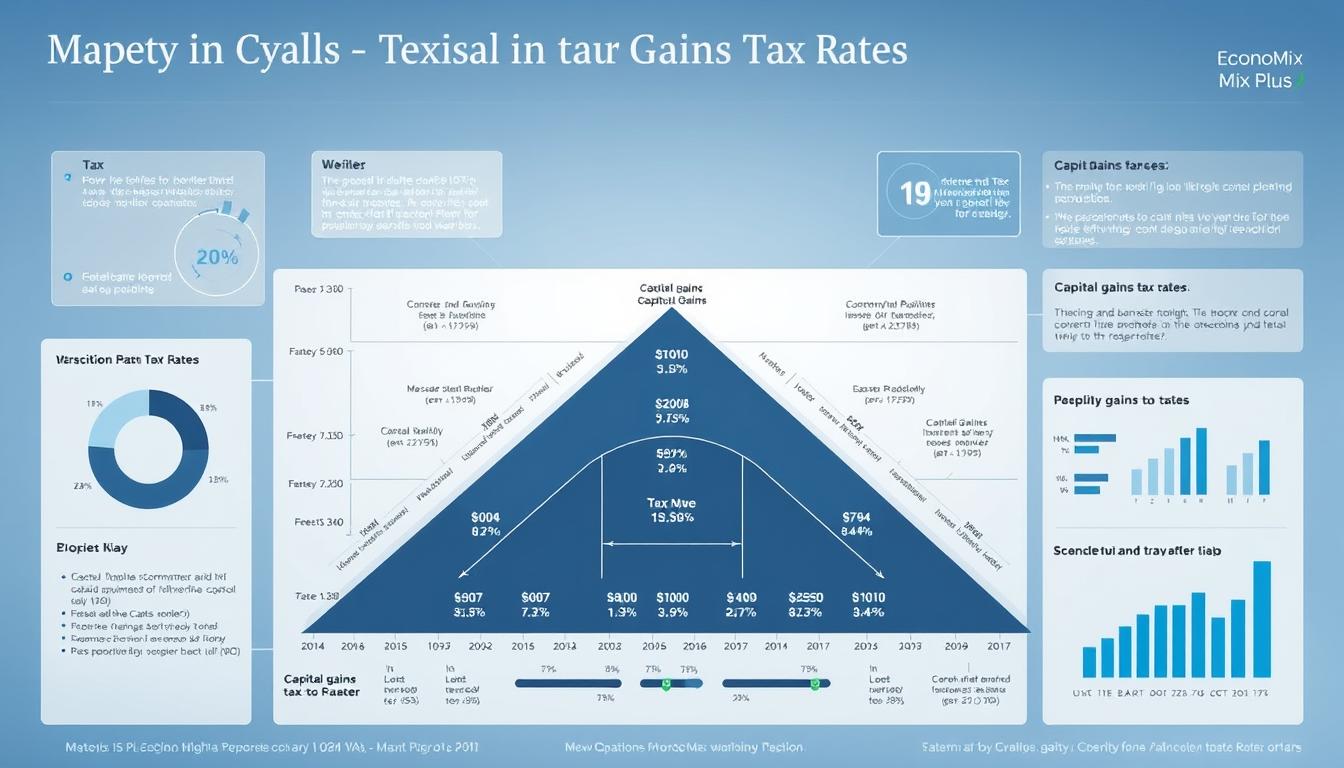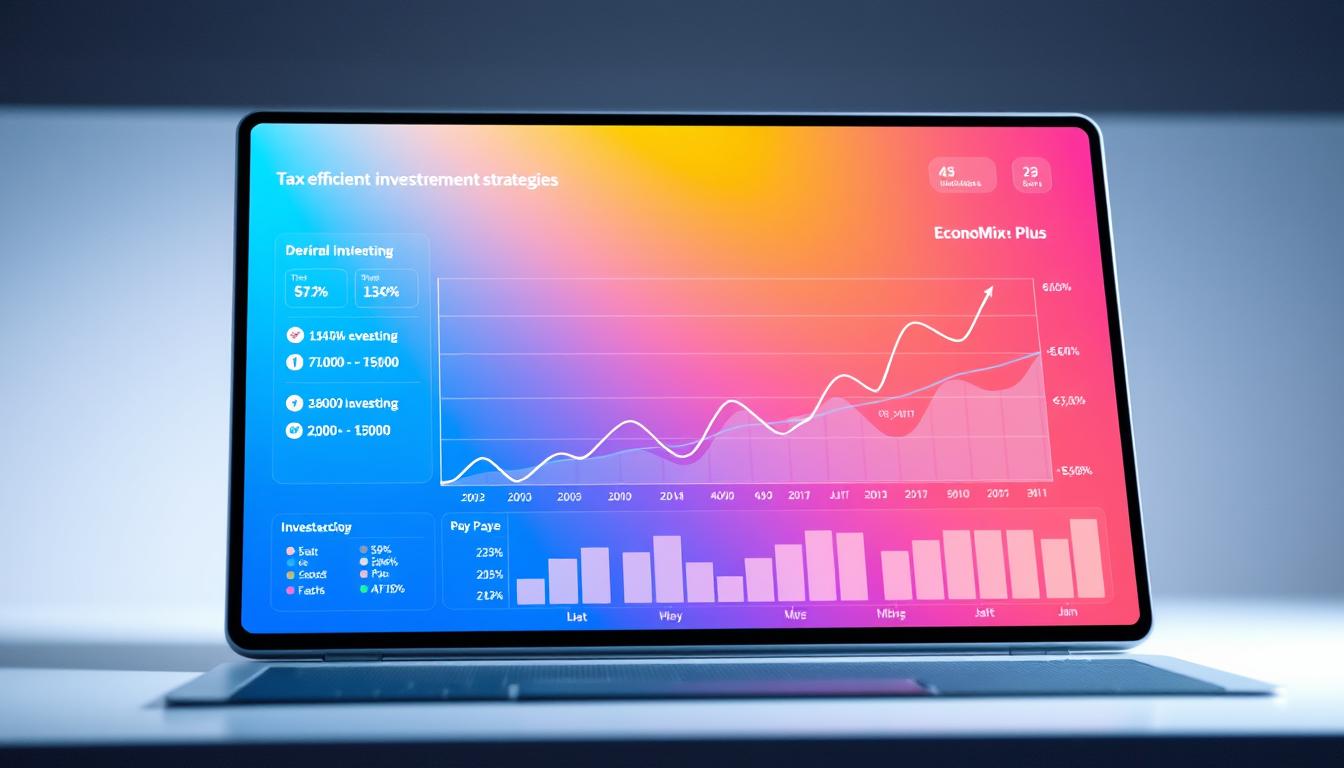Every dollar earned in the stock market doesn’t end up in an investor’s pocket. Taxes quietly shape outcomes, influencing decisions from asset selection to holding periods. Capital gains, dividends, and retirement account structures all hinge on how taxation interacts with market returns.
Investors often overlook how tax-deferred accounts like 401(k)s or Roth IRAs alter long-term wealth. For example, profits in these vehicles grow without immediate tax penalties, allowing compounding to work uninterrupted. Conversely, short-term trades in taxable accounts face higher rates, shrinking net gains.
Tax rates on investments aren’t one-size-fits-all. Long-term holdings benefit from reduced levies, while frequent trading triggers steeper bills. Strategic use of tax-loss harvesting or timing sales around income thresholds can preserve returns. Even retirement planning shifts when balancing tax-free withdrawals against deferred liabilities.
This article examines how taxation reshapes market behavior, from historical trends to modern portfolio tactics. It also explores strategies for maintaining stock investments during volatile while minimizing fiscal drag. Data-driven insights will guide investors toward informed choices—without endorsing traditional savings tools.
Key Takeaways
- Capital gains taxes directly reduce net profits from stock sales.
- Tax-deferred accounts delay levies, while tax-free options eliminate them.
- Holding stocks for over a year lowers tax rates on gains.
- Retirement accounts like IRAs prioritize tax efficiency for long-term growth.
- Strategic timing of sales can optimize after-tax returns.
Understanding Tax Implications on the Stock Market
Fiscal policies have long shaped investor behavior, with historical tax rates leaving visible imprints on market cycles. From post-WWII peaks to modern reforms, government levies influence portfolio strategies and corporate decisions.
Historical Trends in Tax Rates and Their Effects
In the 1950s, top individual income rates exceeded 90%, pushing investors toward dividend-paying stocks for stability. High levies reduced disposable income but didn’t halt market growth—the S&P 500 rose 258% during that decade.
| Period | Top Tax Rate | S&P 500 Annual Return |
|---|---|---|
| 1950-1959 | 91% | 18.9% |
| 1980-1989 | 28% | 17.5% |
| 2018-2023 | 37% | 12.3% |
Evolution of Tax Policies in the United States
The Tax Reduction Act of 1964 slashed corporate rates from 52% to 48%, boosting industrial investments. Reagan-era reforms further cut capital gains taxes, accelerating 401(k) adoption. Recent changes like the Tax Cuts and Jobs Act lowered stock-related levies but sunset in 2025.
Despite fluctuating rates, markets adapt. For example, after 2017’s corporate tax drop to 21%, buybacks surged 55% in one year. Investors now prioritize tax-efficient vehicles, mirroring strategies from high-rate eras.
What is the impact of taxes on the stock market
Market returns hinge not only on asset performance but also on navigating fiscal obligations. Dividends, for instance, face varying rates—qualified payouts taxed at 0-20%, while ordinary income rates apply to non-qualified distributions. This disparity directly shapes investor preferences for high-yield stocks.
Different asset classes face unique tax treatments. Stocks held long-term benefit from lower capital gains rates, whereas mutual funds often distribute taxable gains annually. Real estate investment trusts (REITs) add another layer, with dividends typically taxed as ordinary income.
| Asset Type | Tax Treatment | Impact on Returns |
|---|---|---|
| Stocks (1+ year) | 0-20% | Higher net gains |
| Mutual Funds | Annual distributions | Frequent tax events |
| REITs | Ordinary income rates | Reduced yield efficiency |
Estate planning introduces additional complexity. Inherited assets receive a step-up in basis, resetting cost levels to market value at transfer. This minimizes capital gains liabilities for heirs, making strategic gifting a key component of wealth preservation.
Financial advisors often recommend tailored investment plans that align holdings with tax brackets. For example, placing high-dividend assets in tax-deferred accounts shields income from immediate levies. Proactive adjustments to portfolio allocations can mitigate fiscal drag across market cycles.
Ultimately, tax levels on dividends, asset sales, and estates collectively influence market participation and growth trajectories. Investors who prioritize tax-aware strategies typically preserve more wealth over time—even in volatile conditions.
Tax Breakdown: Capital Gains, Dividends, and Income
Investors often face a maze of tax rules that can erode portfolio gains if ignored. How assets are held—and for how long—determines whether returns face ordinary rates or preferential treatment.

Short-Term vs. Long-Term Capital Gains
Profits from stocks held under one year face short-term capital gains rates matching ordinary income brackets (10-37%). A $10,000 gain could lose $3,700 to levies. Hold assets beyond 365 days, and rates drop to 0%, 15%, or 20%—saving high earners up to 17% per trade.
| Holding Period | Tax Rate Range | Net Return on $10k Gain |
|---|---|---|
| Short-Term | 10-37% | $6,300-$9,000 |
| Long-Term | 0-20% | $8,000-$10,000 |
Dividend Income and Its Tax Consequences
Qualified dividends require 60+ days of ownership and face long-term rates. Non-qualified payouts—common in REITs—get taxed as ordinary income. In 2023, a 3.8% net investment income tax applies above $200k single/$250k joint filers.
Mutual funds amplify tax complexity. Their frequent trading triggers annual distributions—85% of U.S. equity funds paid capital gains in 2021. Investors inherit these liabilities even without selling shares.
Actionable steps:
– Hold dividend stocks 61+ days to qualify for lower rates
– Place high-turnover mutual funds in IRAs to defer taxes
– Monitor holding periods using portfolio tracking tools
By aligning asset types with appropriate accounts and timelines, investors can shrink their fiscal drag. A $500k portfolio might retain $18k more annually through strategic tax planning.
Strategies for Tax-Efficient Investing
Smart portfolio management requires balancing growth objectives with fiscal responsibility. Proactive approaches can significantly reduce liabilities while staying compliant with IRS regulations.

Implementing Tax-Loss Harvesting
This tactic involves selling underperforming assets to offset gains tax liabilities. For example, a $5,000 loss cancels equivalent capital gains, lowering taxable income. Investors can carry forward excess losses up to $3,000 annually against ordinary income.
Automated tools now track cost basis and identify harvestable lots. Robo-advisors often execute these swaps within milliseconds, maintaining market exposure while optimizing tax outcomes.
Leveraging Structural Advantages of Investment Vehicles
ETFs and separately managed accounts (SMAs) outperform traditional mutual funds in tax efficiency. Unlike funds, ETFs rarely distribute capital gains due to their creation/redemption process. SMAs allow direct ownership of securities, enabling precise loss harvesting.
| Vehicle | Tax Advantage | Best For |
|---|---|---|
| ETFs | Low turnover | Broad market exposure |
| SMAs | Custom harvesting | High-net-worth portfolios |
| REITs | Depreciation benefits | Real estate income |
Timing asset sales around tax bracket thresholds also matters. Selling during lower-income years qualifies investors for 0% long-term capital rates. Pairing this with Roth IRA conversions can compound tax-free growth over decades.
Rebalancing through contributions rather than sales minimizes taxable events. This approach preserves long-term capital appreciation while adjusting allocations.
Analyzing Corporate Tax Rates and Market Performance
The interplay between corporate levies and equity valuations remains a critical but understated force. Since 1960, U.S. corporate tax rates have swung from 52% to as low as 21%, directly shaping earnings retention and shareholder returns.

Comparative Insights into U.S. Corporate Tax Trends
Historical data reveals a clear pattern: lower corporate rates correlate with improved market performance. After the 2017 Tax Cuts and Jobs Act slashed rates to 21%, S&P 500 companies increased capital expenditures by 23% within two years. Buybacks surged 55%, boosting per-share earnings.
| Year | Corporate Tax Rate | S&P 500 Annualized Return |
|---|---|---|
| 1986-1993 | 34% | 10.2% |
| 2000-2017 | 35% | 5.8% |
| 2018-2023 | 21% | 14.1% |
Tax management in corporate accounts significantly impacts net returns. Multinational firms now allocate 12-18% more resources to tax-efficient jurisdictions compared to pre-2017 levels. This optimization preserves earnings for dividends and R&D.
With TCJA provisions sunsetting in 2025, investors face renewed uncertainty. Strategic investment decisions now prioritize sectors with lower effective rates, like tech (12% average) over utilities (28%). Tax-aware portfolio structuring could mitigate risks if rates rebound.
For those concerned about higher corporate taxes, diversification into tax-advantaged funds offers shelter. Municipal bonds and sector-specific ETFs now comprise 22% of institutional allocations—up from 14% in 2016.
Integrating Tax Considerations into Investment Decisions
Navigating tax rules demands precision—one misstep can erode years of portfolio growth. Professional guidance bridges this gap, transforming complex regulations into actionable strategies.
The Role of Financial Advisors in Tax Planning
Certified planners analyze individual circumstances—income brackets, state residency, and legacy goals. A 2023 Vanguard study found portfolios managed with tax-aware strategies outperformed others by 1.5% annually over a decade. Advisors often recommend municipal bonds for high earners in states like California, where combined tax rates exceed 50%.
Portfolio Management and Asset Allocation Adjustments
Location matters. Placing REITs in Roth IRAs avoids ordinary income taxes, while growth stocks thrive in taxable accounts with lower capital gains rates. Automated tools now rebalance portfolios using new contributions—reducing taxable sales by 37% compared to traditional methods.
Monitoring State-Specific Tax Regulations
Nine states levy no income tax, creating opportunities for tax-sensitive investors. Texas residents might prioritize energy sector securities, while New Yorkers often allocate more to tax-exempt vehicles. Recent changes in Illinois’ estate taxes prompted 22% of advisors to revise client asset locations.
Actionable steps:
– Review holdings quarterly with a fiduciary advisor
– Use TreasuryDirect for tax-advantaged bond purchases
– Track legislative updates through IRS publications
Proactive adjustments protect returns better than reactive fixes. As one Morgan Stanley report notes, “Tax efficiency isn’t about avoiding payments—it’s about strategic timing.”
Conclusion
Navigating fiscal responsibilities remains crucial for preserving investment gains. Historical patterns show markets adapt to tax changes—from Reagan-era reforms to modern corporate rate adjustments. Strategic approaches like holding assets long-term and using tax-loss harvesting can significantly enhance after-tax returns.
Portfolio management benefits from aligning asset locations with tax brackets. Placing high-dividend stocks in IRAs or prioritizing growth-oriented securities in taxable accounts reduces annual liabilities. These decisions compound over years, potentially adding six-figure sums to retirement balances.
Professional guidance proves invaluable in navigating complex regulations. Advisors help optimize step-up basis opportunities and estate planning considerations while monitoring legislative shifts. Though levies influence outcomes, diversified portfolios historically withstand fluctuating fiscal policies.
Investors should review strategies annually as part of a comprehensive financial plan. Proactive adjustments—combined with expert insights—position portfolios to thrive across economic cycles while minimizing unnecessary risk.











